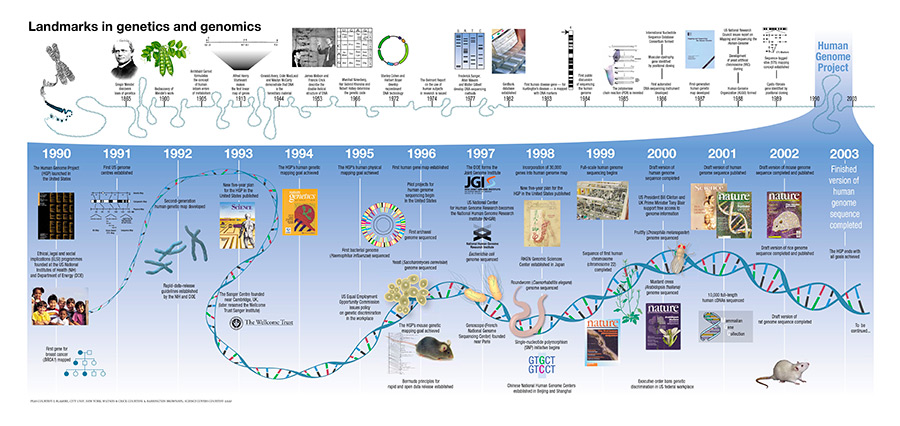- Variation in the human genome provides insight into our evolutionary history as a species.
- Snapshots of human genomes from different time periods let us see what parts of the genome have been adaptive over time—examples include variants for high altitude adaptation, immune response, and metabolism.
Highlights
Human genetics is a rapidly moving, exciting field. In 2003, fifty years after the discovery of the structure of DNA, the Human Genome Project revealed the complete sequence of the human genome. Now, we have projects that are sequencing thousands of genomes from people around the globe (including ancient people). This has provided a lot of information about human population history and adaptations.
Genes and phenotypes
A single haploid copy (a single set of unpaired chromosomes) of the human genome is 3.2 billion base pairs (so each cell has around 6.4 billion bases of DNA in the nucleus!).

Image credit genome Project DNS Molecule
Technically, the “Human Genome” includes both nuclear (you inherit half from mom and half from dad) and mitochondrial DNA (which you inherit solely from your mom). The phenotypes—or the observable traits like skin color, weigh, height, face shape, bone structure, and eye color—that we typically see in each other are complex and involve multiple genes that are also influenced by the environment. These also include traits that we don’t see, such as blood pressure and pathogen susceptibility.
Many of these phenotypes and the underlying genetics are the focus of medical genetics, but the variation in the human genome also provides insight into our evolutionary history as a species. In addition, ancient DNA research has resulted in the recovery of archaic human genomes (from Neandertals and Denisovans) as well as from early anatomically modern humans in Eurasia.
From these data, researchers can infer when these groups initially split from one another as well as when they subsequently interbred. The snapshots of human genomes from different time periods also let us see what parts of the genome have been adaptive over time—examples include variants for high altitude adaptation, immune response, and metabolism.

The Human Genome Project Timeline. Download the pdf here.
Image credit Human Genome Project
Written by Anne Stone PhD